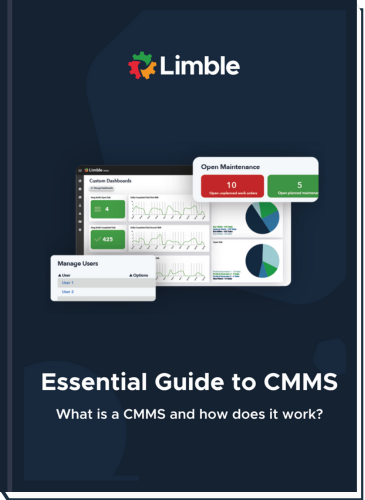From education to manufacturing, healthcare to hospitality, a range of businesses depend on regular maintenance to maintain the condition of a facility of multiple facilities full of critical physical assets. Your very ability to conduct business depends on a maintenance program that ensures facilities are functioning safely, efficiently, and cost effectively.
This is why facility condition assessments (FCAs) are so critical. A facility condition assessment is a comprehensive evaluation of your organization’s buildings, designed to identify and prescribe preventive maintenance, repairs, and upgrades.
What is a facility condition assessment (FCA)?
A facility condition assessment is a comprehensive, data-driven evaluation of the physical condition of your buildings. The primary objective of the evaluation is to help determine what preventive maintenance, repairs, and upgrades you should perform, and when you should perform them.
FCAs should be considered an essential part of your organization’s asset management and facility management strategies. An FCA can provide a clear measure of your building’s current condition as well as allowing you to make informed capital planning decisions about the future of your organization’s physical properties.
Your FCA will take into account factors like the age of your building, its ability to perform its intended function, the materials used in construction, and the structure’s design parameters. Operations teams will use this framework to provide key information for facilities managers including:
- The root causes of deterioration (if any)
- The replacement value of your assets
- The building’s overall capability to meet the needs of stakeholders
Free Building Maintenance Checklist!
Using a building maintenance checklist ensures the consistent upkeep and safety of a facility.

Who needs to conduct facility condition assessments?
In short, any business with a building to maintain should conduct an FCA. This is particularly true of those who own and use properties for commercial purposes. In fact, in many cases, owners of commercial properties are required by law to conduct regular facility condition assessments.
The types of commercial properties that may require FCAs include, but are not limited to:
- Schools
- Hospitals
- Government facilities
- Manufacturing plants
- Storage warehouses
- Real estate investments
- Retail spaces
- Office buildings
What are the benefits of facility condition assessments?
Performing regular facility assessments can significantly improve your facility maintenance strategy. Regular facility condition assessment makes it possible to track relevant performance metrics, make data-driven improvements, and ultimately avoid breakdowns to extend the useful life cycle of critical assets and keep facilities safe and productive.
Here are a few scenarios where conducting a timely FCA can pay dividends by improving maintenance plans and enabling informed, data-driven decision making.
Selling a property
Conducting regular, ongoing FCAs puts you in an advantageous position when selling a property. FCAs can help you to identify and conduct regular preventive maintenance tasks in the years leading up to a sale. An FCA can also provide full transparency into a property’s condition and maintenance history for your prospective buyer.
Prioritizing repairs
The data and insights produced by FCAs can help property owners and maintenance teams prioritize the repairs, renovations, and upgrades needed to keep physical properties in prime operating condition. Without this analysis, maintenance teams may rely on guesswork and wind up wasting their time on unnecessary or missing signs of trouble.
Minimizing repair costs
FCAs can help you identify maintenance issues in their early stages so you plan more precisely for more proactive maintenance work. Consequently, you’ll save on the costs of repairs, part replacements, or total equipment failure.
Ensuring safety and compliance
FCAs can help to ensure that your facilities are in compliance with codes and regulations at the federal, state, and local levels. In addition to ensuring the safety of the building’s occupants and the surrounding environment, FCAs can protect your business from penalties for regulatory noncompliance.
6 steps for an effective facilities condition assessment
Your business will likely work with an assessor to conduct facilities condition assessments for your properties. Below, we outline the six steps that will typically go into this process.
Step 1: Determine the scope of the assessment
During this pre-assessment phase, determine the scope and relevant parameters of your FCA. Here some key components you’ll need to consider throughout this process:
Scope of the assessment
- Number of buildings
- Physical characteristics of each building (size, location, age, etc.)
- Function and design
Relevant assessment considerations
- Timeframe and deadlines
- Budget and expected costs
Data and information needed
- Historical maintenance data
- Employee/occupant interviews
- Permitting/zoning information
Step 2: Conduct pre-inspection data collection
During the data gathering step, you will:
- Conduct interviews
- Review past reports and maintenance logs
- Take inventory of your assets
- Review building plans
- Review past expenditures
Step 3: Execute the building inspection
Use the data you’ve gathered to guide your facility inspection process. Conduct a building walkthrough with your assessor, including testing of critical building systems. The assessor will record their findings through a combination of notes, photos, videos, and formal evaluation.
Step 4: Analyze the data
Leverage your findings to determine the maintenance steps your business must take to protect your facilities, workers, and operational continuity.
Step 5: Prepare recommendations
Your assessor will typically provide a timetable with actionable recommendations for conducting facility maintenance over the next several years, including recommended repairs, upgrades, and replacements.
Step 6: Present the final report
The final report will help building owners and managers identify problem areas and prioritize their next steps. A final report might include:
- An FCA checklist reviewing conditions for each area of your facility
- Maintenance recommendations with a timeline and cost estimates
- A Facility condition index (FCI), scoring the current physical condition of your properties.
How often should you perform facility condition assessments?
As a general rule, you should perform an FCA every five to ten years. FCA data should include recommendations and a maintenance schedule projected out for five to ten years.
This schedule can vary, however depending on the type of facility, local laws, building age, how many buildings you have, and more.
What is the facility condition index?
As noted above, the Facility condition index (FCI) is a numerical value assigned to reflect the overall condition of your building. It is used to provide a benchmark to compare the conditions of similar groups of facilities.
FCI is calculated by taking the total cost of existing repairs and maintenance needed and dividing that by the total replacement value of your building, as shown in the graphic below. This will provide a percentage that helps you determine how the cost of repairs compares to the cost of simply replacing the entire building.
The facility condition index rates the overall condition of buildings to help guide repair efforts.
If your cost of repair is more than it would cost to replace the building, then your facilities are in pretty bad shape.
As a general rule, a building with an FCI of 10% or less is in good condition.
FCAs in action: industry use cases
Below, we take a look at some of the different industries that use FCAs as part of their building maintenance strategies.
- Education: Schools of all types have a responsibility to maintain healthy, safe, and functional classrooms, libraries, labs, and sports facilities. FCAs provide inspection of roofing, flooring, HVAC units, electrical systems, plumbing, fire safety precautions, and more.
- Healthcare: Hospitals, clinics, and medical centers must evaluate the condition of patient rooms, waiting areas, operation theaters, imaging centers, and more. FCAs provide inspection into the functionality and upkeep of these spaces alongside inspection of HVAC systems, roofing, electrical systems, etc.
- Hospitality: Hotels and resorts may conduct assessments of guest rooms, dining spaces, recreational areas, and operational backend spaces, including inspection of HVAC, plumbing, fire safety measures, elevators, etc.
- Commercial Spaces: Offices, retail complexes, and malls must conduct assessments of tenant areas, common spaces, and parking lots with inspections encompassing roofing, flooring, HVAC, electrical fixtures, elevators, fire safety, accessibility features, and more.
Facility condition assessments vs. building condition assessments and property condition assessments
You may hear the terms building condition assessment and property condition assessment used interchangeably with the term facility condition assessment. While there are some similarities between these three assessment strategies, they are fundamentally different in a few key ways.
Facility condition assessment vs. Property condition assessment
Typically, a property condition assessment (PCA) is performed directly prior to selling a property, whereas a facility condition assessment is performed to ensure regular upkeep of your facilities. Your due diligence may make it easier to sell your property when the time comes, but an FCA is different from a property condition assessment, which is only performed before the property changes hands.
Facility condition assessment vs. Building condition assessment.
The primary differences between facility condition assessments and building condition assessments are related to their scope. Facilities are often composed of multiple structures or buildings. Whereas FCAs offer comprehensive evaluation of your facilities, building condition assessment refers to the evaluation of single buildings. These buildings may be the sole property of a given business or part of a broader set of facilities.
More types of facilities assessments
Other types of facilities assessments may include Capital Needs Assessments (CNAs) and Deferred Maintenance Studies (DMS). These alternate assessment methods include different tactics and tools, and answer distinct questions.
Capital Needs Assessments (CNAs)
This type of assessment focuses on identifying and evaluating long-term capital investment requirements for a facility. The objective with CNAs is to forecast the major expenditures necessary to maintain, repair, or upgrade a property over an extended period
This is distinct from an FCA, which identifies the specific maintenance needs of your property without drawing connections to your costs. CNAs are typically conducted when property owners or managers need to plan for significant capital investments, such as renovations, replacements, or expansions, and are often required for financial planning, budgeting, and securing funding for large-scale projects.
Deferred Maintenance Studies (DMS)
This type of assessment focuses on identifying and quantifying the backlog of maintenance tasks that have been postponed or deferred beyond their recommended schedules. This assessment is usually conducted when property owners or managers suspect or acknowledge significant neglect or underinvestment in maintenance activities.
In most cases, a DMS will be used to identify failures in existing maintenance strategies while outlining an approach to resolving maintenance backlogs and creating a prioritized plan to address the deferred maintenance backlog efficiently and cost-effectively.
Facility management software and FCAs
Organizations today deploy a wide variety of tools and technologies aimed at providing comprehensive, data-driven facility condition assessment. A growing number of businesses are gravitating toward computerized maintenance management system (CMMS) platforms for their emphasis on proactive facility maintenance, their user-friendly interface, and their proven ability to lower maintenance costs.
Interested in learning more? Check out our Essential Guide to CMMS Implementation.
Free Essential Guide to CMMS
Our Essential Guide to CMMS covers everything you need to know about computerized maintenance management systems.


